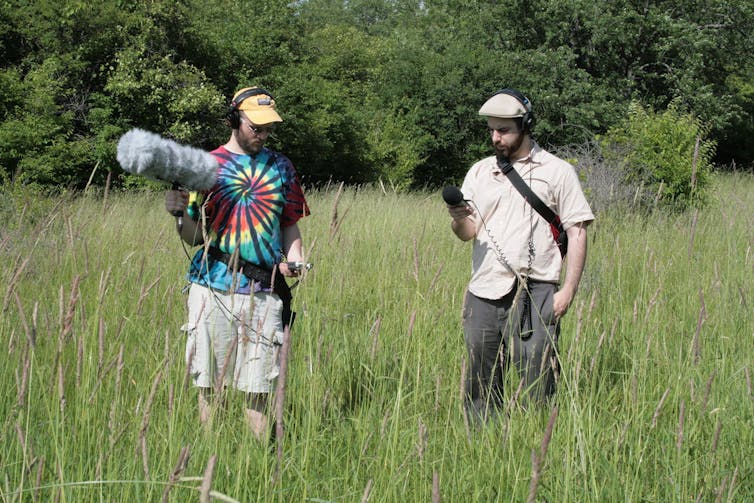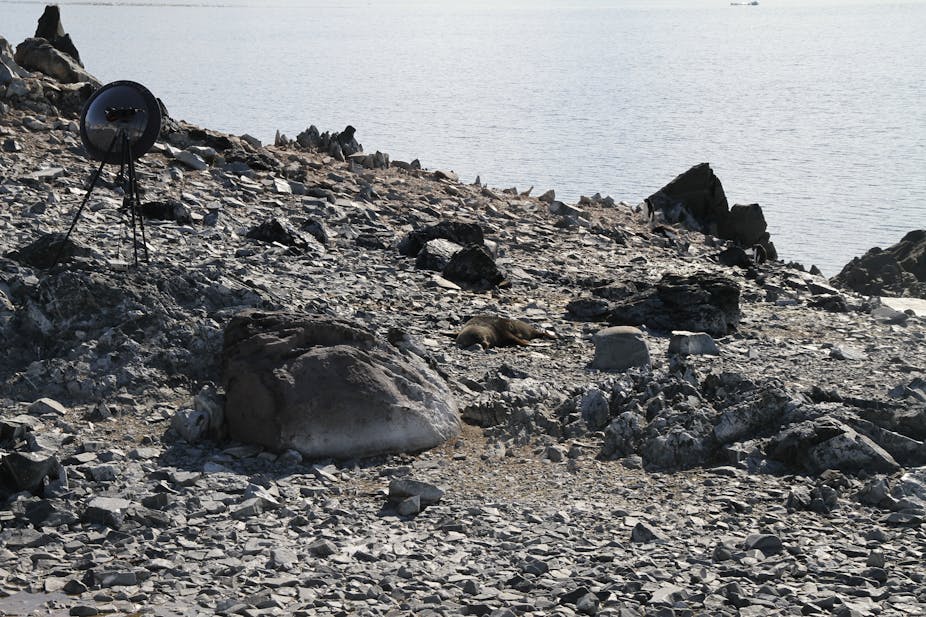In 1889, an eight-year old boy made a recording of a Common Sharma using his father’s wax cylinder recorder. This boy, Ludwig Koch, would go on to become one of the great natural history broadcasters of the early 20th century.
But what made his recording of the bird so important? Why was this event seminal to field recording?
Koch made the first documented non-human recording. This was also the first time that type of sound, captured somewhere, could be reproduced somewhere else at another time. It was in the grip of the microphone, that the opportunity to exhume sounds from the grave of memory was realised.

Until the later part of the 19th century, sound remained a virtual fugitive. In the moment of perceiving an auditory event that sound was gone, effectively extinct, never to be revived. Thomas Edison championed and popularised the phonograph, a recording and playback device.
In the 20th and 21st centuries analogue and digital devices that could record sound cheaply and easily became more readily available. Sound can now easily be collected for revision in other places and other times.
While he may not have realised in the moment, Koch’s Sharma recording preempted a body of work concerning the sonic recording of place. An art form which has come to be known as field recording.
Field recording traces a convoluted history across the 20th century. It calls on traditions in radiophony, sound design, ethnomusicology and various documentary traditions. It initially started from a point of ethnography, purporting to deliver an objective rendering of time and place. But contemporary understandings of field recording have shifted considerably from this position.
Current practitioners concern themselves with the subjective position of the listener. What started as an interest in representing the exotic has matured into an art practice that concerns itself with the phenomena of listening. Moreover, it provides an insight into how our interactions with the aural world might be performed.
The field of field recording
Like any art form, the expressions and preoccupations of artists engaged in field recording are varied and often incongruous. Works by foundational artists such as the UK’s Chris Watson (who has worked extensively with Sir David Attenborough) and Douglas Quin demonstrate a profundity of listening.
Quin’s recording of Weddell Seals in Antarctica remains one of the most stunning recordings ever published. The seals alien tonal bursts are utterly un-mammalian in character.
By contrast, the work of Spanish artist Francisco Lopez asks the listener to consider a more “acousmatic” way of listening. Acousmatic listening means the sound, removed from its source, is the sole focus of attention.
Other artists, including Japan’s Toshiya Tsunoda and Australian Joyce Hinterding explore atmospheric sounds. Their work is concerned with sound fields that fall outside our hearing range.
These infrasonic, ultrasonic and electro-magnetic whisperings surround us constantly. Though without specialist equipment and techniques through which to explore them, these sounds remain beyond our perceptual reach.
Listening through another ear
If there’s one theme that unites the contemporary understanding of field recording it is listening – and how listening can be successfully transmitted.
In the book Noise Water Meat (1999), Australia-based historian Douglas Kahn speaks of the phonograph’s ability to hear everything. While it’s unlikely Kahn means hearing “everything” literally, he does highlight one important feature of microphones.
Unlike humans, whose listening is the result of a complex set of conditions shaped by physiological and psychological factors, the microphone and the recording device are non-cognitive, detecting sound only through a set of technological variables.
Being non-cognitive, the microphone lacks an ability to focus in on particular sounds of interest and, more importantly, to filter out undesirable sonic materials. Potentially, this means our ears are perhaps better filters than listening receptacles.
It’s here, in the translation of the sound listened for, to the sound recorded, that the artistry of field recording is revealed.

For a field recording to be successful, the artist must be able to create a metaphoric connective tissue between their internal, psychological listening and the external technological listening of the prosthetic ear of the microphone.
This relational listening, between the field recording artist and the prosthetic ear of the microphone, is at the core of a successful transmission of that listener’s listening.
Thus, field recording is an invitation for us as listeners to consider sound through another set of ears. It encourages us to hear, at least in part, as someone else does. It invites us to recognise our capacity for aural choice and to understand that ultimately what we hear is not always what we listen to.

